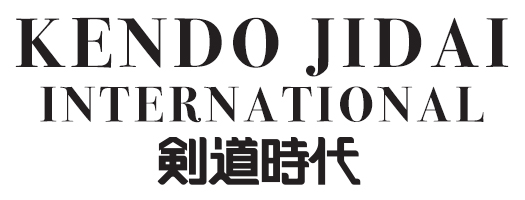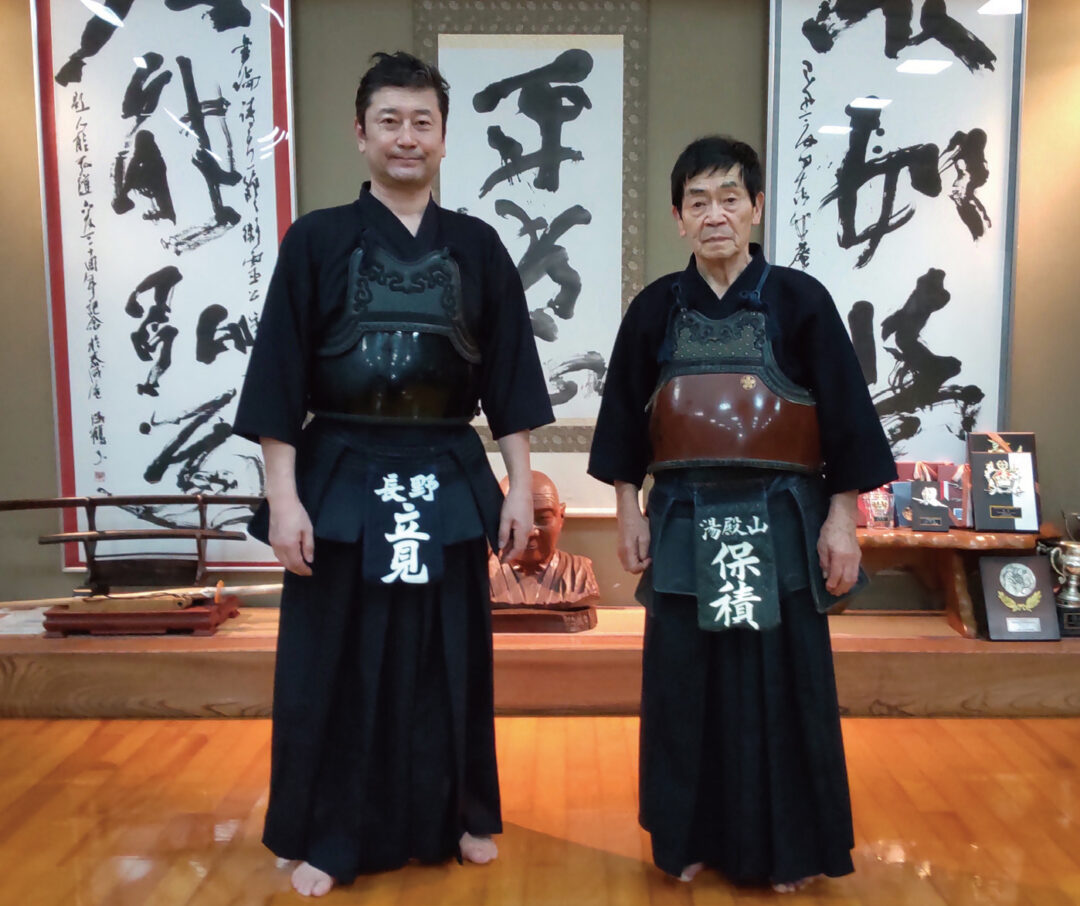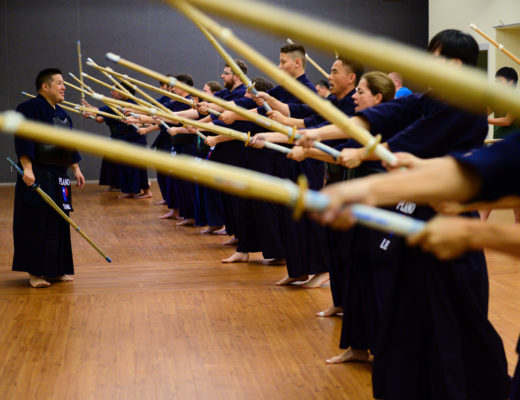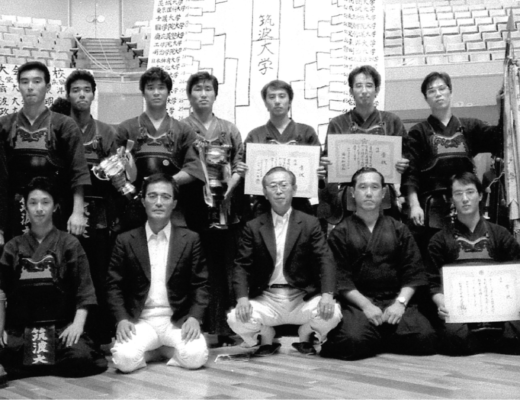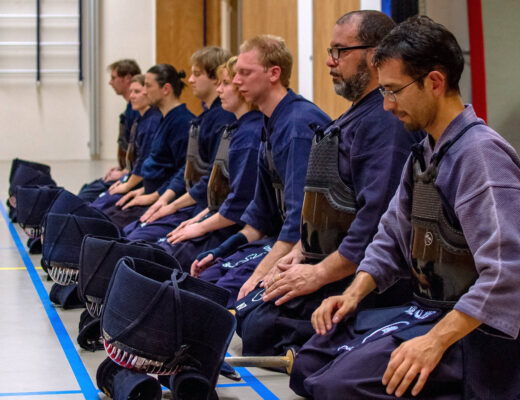2024.11 KENDOJIDAI
Translation: Sato Mariko, Pepijn Boomgaard
Tatsumi Akihisa
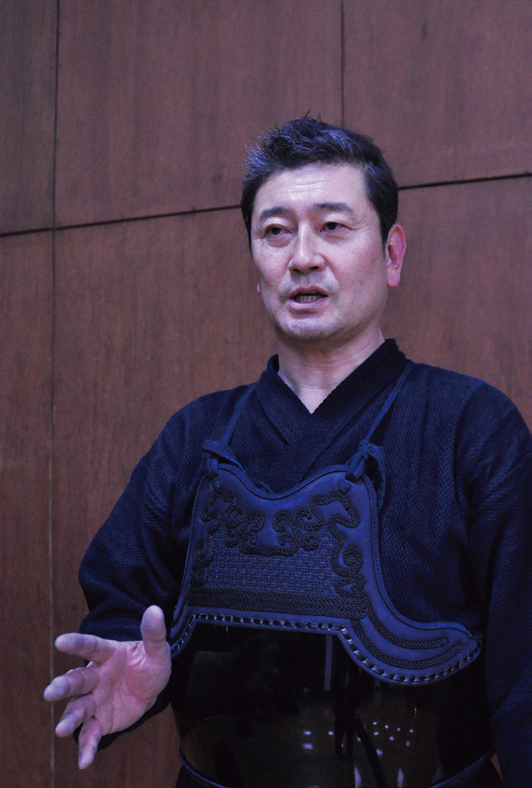
I grew up in a Kendo family. My father, a corporate employee, is also a Kendo teacher with the rank of Kyoshi 7th Dan. Both my sister, who is four years older, and my younger sister, who is four years younger, practiced Kendo. Among the five members of my family, my mother was the only one not involved in Kendo.
Influenced by my father and older sister, I began practicing Kendo at the Toyonaka Kenyu-kai Oike Dojo in Osaka when I was in the second grade. At the time, I was also attending swimming school and piano lessons, making Kendo my third extracurricular activity. However, based on my parents’ belief that “it’s better to focus on one activity,” I eventually decided to focus solely on Kendo.
During my first year as a beginner, the instructors at Oike Dojo provided meticulous guidance on Kendo etiquette and the basics, without wearing Men. This foundational training was a formative experience for me.
When I was in the third grade, our family moved to my mother’s hometown, Tatsuno City in Hyogo Prefecture. Tatsuno is known as the birthplace of Miki Rofu, the lyricist of the famous children’s song “Aka Tonbo” (Red Dragonfly). It is also the production center of the renowned somen noodles, “Ibonoito.”
My mother, a former elementary school teacher, often explained to me, “It’s because of the rich natural environment here that Miki Rofu was able to write the lyrics for Aka Tonbo. And thanks to the pure water of the Ibo River and the salt from Akou, the delicious somen noodles are made.”
After I had settled into my new school life following the move, I began training at Aioi Wakatake-kai in the neighboring town of Aioi City, where my father’s acquaintance was an instructor. I continued practicing there until the third year of junior high school.
At the time, Aioi Wakatake-kai had nearly 100 members. It was a powerhouse Dojo, with senior members bringing home championship flags from tournaments every week.
Initially, I wasn’t particularly enthusiastic about attending the Dojo, using hand-me-down Kendo equipment from my sister. However, things began to change around the fifth grade when I was given new Kendo Bogu and selected as a member of the team. From then on, my attitude gradually shifted. Like the senior members, I became a regular competitor, and my weekends were filled with the demands of tournament matches.
Aioi Wakatake-kai held practice sessions four times a week, and many of the instructors were very strict. As a child, I often disliked going to the Dojo. However, now that I am an adult, I truly appreciate how challenging it must have been for the instructors to come to the Dojo to train young Kendo practitioners after a long day of work.
It is thanks to their dedicated and passionate guidance that I am who I am today, and I am deeply grateful for their efforts.
Among the instructors at Aioi Wakatake-kai, the one who served as the coach during my time as a competitor and guided me not only in practice and matches but also in my personal life was the late Kanatani Hiroshi Sensei.
Kanatani Sensei was incredibly strict. Practice sessions followed a structure of basics, followed by Oji-waza techniques, match-style practice, Jigeiko with the Sensei, and finally, Kakari-geiko. Under his watchful eye, there was always an atmosphere of tension in the Dojo.
I still vividly remember the pain I felt during Jigeiko when Kanatani Sensei struck my Men-buton. As a child, I thought to myself, “How could a teacher be so cruel as to strike a child so seriously!” That memory remains with me to this day.
As for Kakari-geiko, I have nothing but painful memories. I recall being pushed to my limits, repeatedly striking the teachers and senior students who wereMotodachi, to the point where my legs could no longer support me.
Looking back now, I realize that the pain I felt when Kanatani Sensei struck my Men-buton and the grueling Kakari-geiko were lessons in the importance of Zanshin and understanding the “right moment to strike.”
Sensei often explained Zanshin to elementary school students as “preparation for what comes next,” making it easy for us to grasp. He also extended this concept to daily life, teaching us the importance of tidiness and mindfulness with lessons such as, “Fold your clothes after taking them off,” “Line up your shoes after removing them,” and “Clean up your dishes after eating.”
In Kendo, I was taught that neglecting Zanshin delays your preparation for the next move, leaving you vulnerable to being struck by your opponent. On the other hand, if you maintain Zanshin, you are ready for the next action, allowing you to perceive openings in your opponent and strike at the right moment.
Now that I have more opportunities to guide the next generation, I strive to uphold the lessons I learned from Kanatani Sensei—particularly the importance of Zanshin and treating every encounter as a serious match, regardless of the opponent.
The rest of this article is only available for Kendo Jidai International subscribers!
